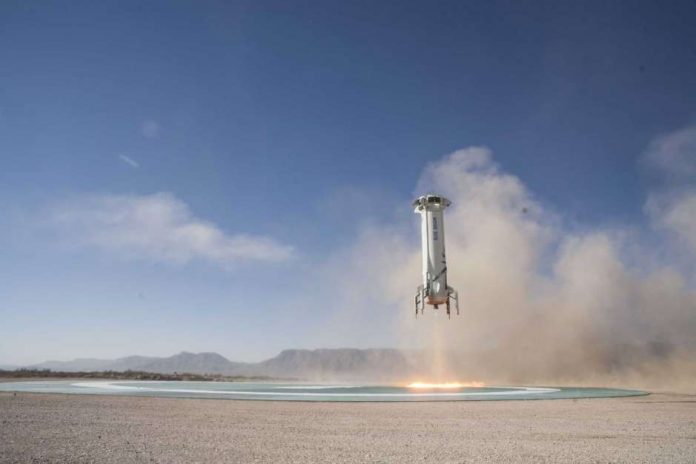NASA said Tuesday it may fly NASA astronauts, engineers, scientists, operators and trainers on suborbital vehicles owned by commercial companies.
NASA’s Flight Opportunities program has successfully worked with emerging commercial suborbital transportation systems to fly research payloads to space for short periods of microgravity time. In addition, the Flight Opportunities program recently released a call that allows those non-NASA researchers to propose accompanying their payloads in suborbital space.
Now the Suborbital Crew (SubC) office within NASA’s Commercial Crew Program will lay the groundwork for flying NASA personnel on commercial suborbital space transportation systems. The goal of the SubC office is to perform a system qualification, or safety assessment, to enable NASA astronauts, principal investigators and other NASA personnel to take advantage of these unique capabilities. Following the qualification, NASA plans to purchase seats on commercial suborbital space transportation systems for NASA use.
“We’ve seen how industry can develop innovative crew transportation systems that meet NASA’s safety requirements and standards,” said Kathy Lueders, associate administrator for Human Exploration and Operations at NASA Headquarters. “Now we’ll be looking at a new way of enabling NASA personnel to fly on commercial suborbital space systems by considering factors such as flight experience and flight history.”
Commercial suborbital spaceflight capabilities are anticipated to be more accessible, affordable, and available than missions to the International Space Station and could provide NASA additional commercial human spaceflights to conduct such activities as testing and qualification of spaceflight hardware, human-tended microgravity research, and additional training opportunities for astronauts and other NASA personnel. The agency has developed an intensive, comprehensive training program for astronauts and astronaut candidates, and suborbital crew space transportation services could provide even more training opportunities for NASA astronauts, engineers, scientists, operators, and trainers.
The last time NASA astronauts flew on suborbital missions was at the dawn of American human spaceflight with Project Mercury and the X-15 hypersonic research program. Today, the industry is preparing to offer suborbital flights as a service, and NASA wants to be a buyer.
“Suborbital human spaceflight has the potential to provide NASA a great way to meet the agency’s needs and continue our efforts to enable a robust economy in space,” said Phil McAlister, director of Commercial Spaceflight Development at NASA Headquarters. “It is notable that no NASA funds were used for the development of suborbital vehicles, but we can participate in the market as a buyer. The U.S. aerospace industry is proving again that it is technically and financially capable of developing safe, reliable, and cost-effective space systems.”
One of the initial activities for SubC is to work with the Federal Aviation Administration (FAA) and commercial suborbital space transportation providers to define the approach for system qualification for NASA personnel, as well as identify the specific performance capabilities NASA desires.
NASA is seeking responses to a related Request for Information (RFI) to inform the agency’s planning for suborbital crew space transportation systems and plans to hold an industry forum, details for which will be announced via updates to the RFI.
NASA created the Commercial Crew Program to transport NASA astronauts to and from the International Space Station in low-Earth orbit and awarded contracts to Boeing and SpaceX to develop human space transportation systems that will launch American astronauts on American rockets from American soil. The first test flight with NASA astronauts, the SpaceX Demo-2 mission, launched May 30, 2020. NASA’s Commercial Crew Program is based at the agency’s Kennedy Space Center in Florida.





























